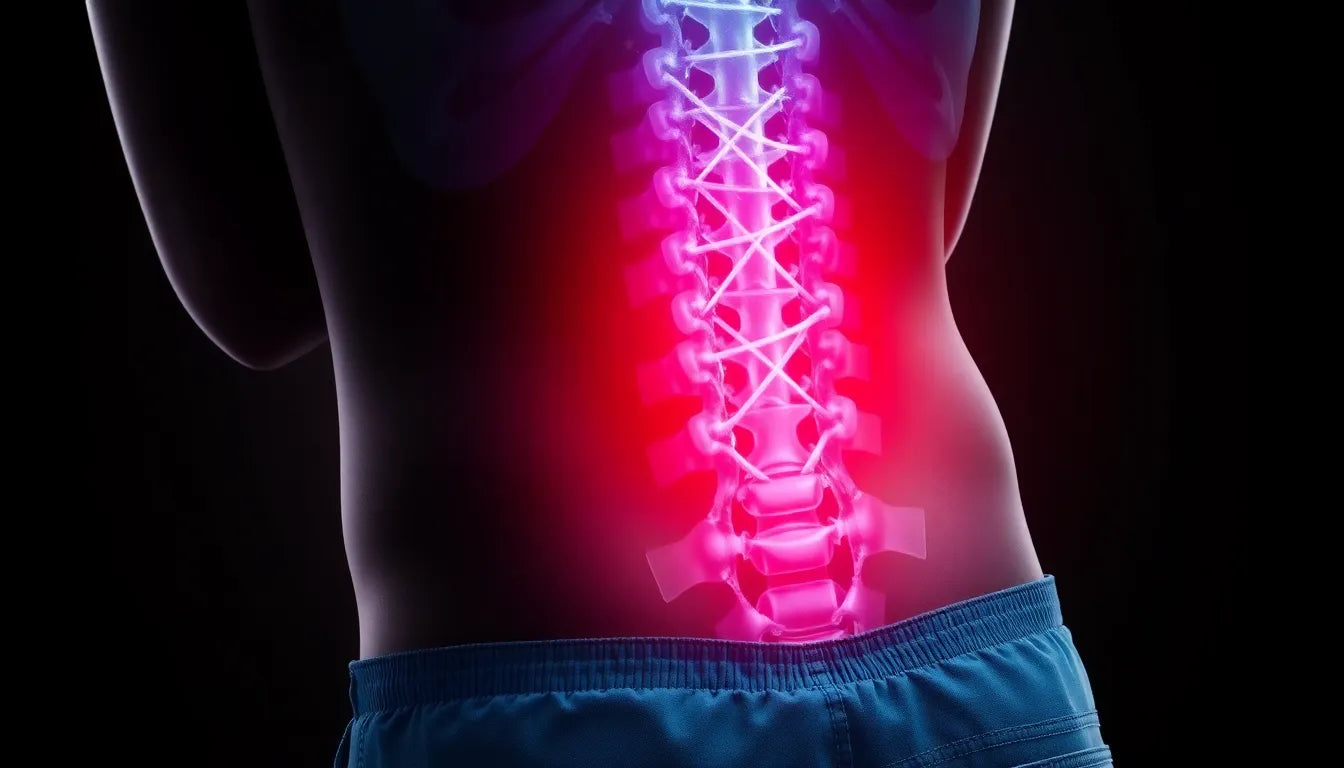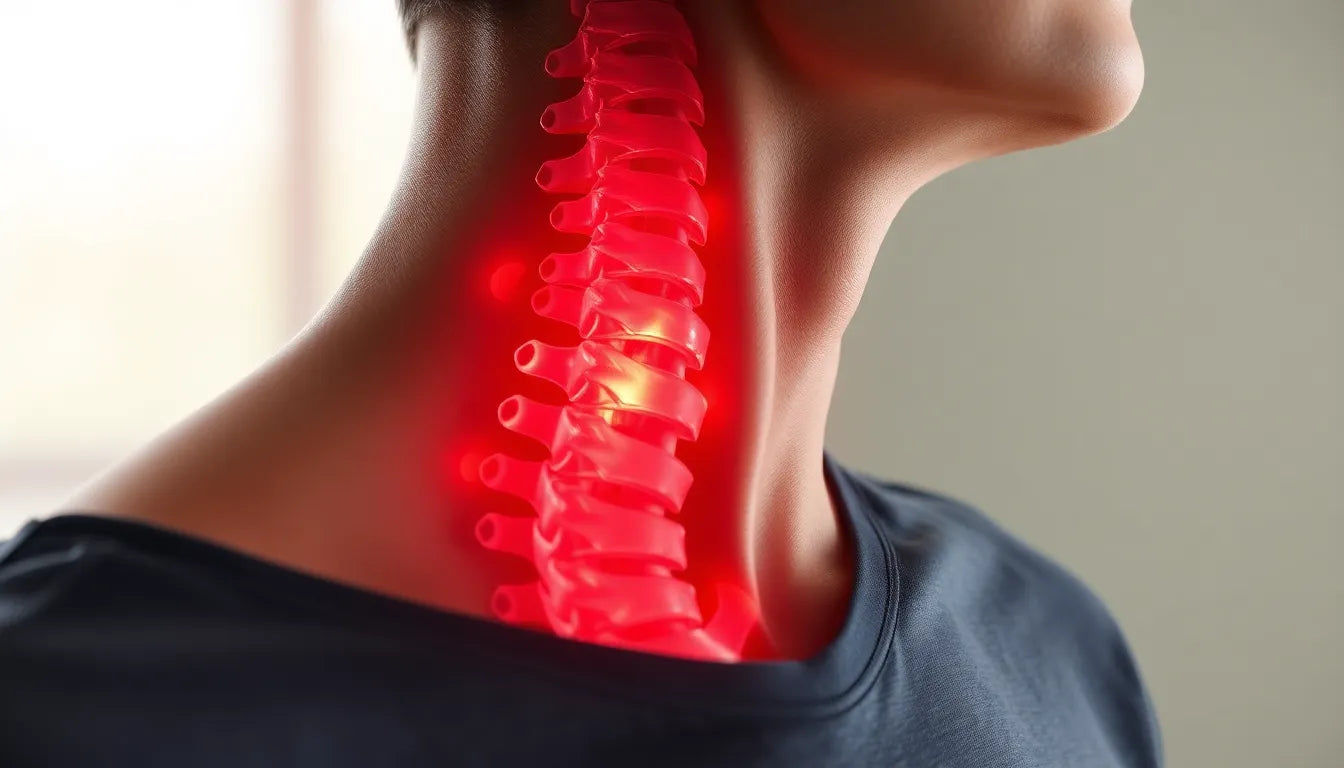When faced with concerns about a herniated disc, one of the most pressing questions is whether it represents a permanent condition. This fear is not unfounded, as herniated discs are a common spinal issue that can significantly impact daily life, causing discomfort, pain, and mobility challenges. Understanding whether a herniated disc is a life sentence or if recovery is possible is crucial for those affected, as it influences treatment decisions and lifestyle adaptations.
understanding herniated discs
A herniated disc occurs when the soft, gel-like center of a spinal disc pushes through a crack in its tougher exterior. This can happen anywhere along the spine but is most common in the lower back. The spine is composed of vertebrae cushioned by discs that absorb shock and allow flexibility. When a disc herniates, it can press on nearby nerves, leading to pain, numbness, or weakness in an arm or leg.
The causes of herniated discs are varied, often resulting from a combination of factors such as injury, the natural aging process, or repetitive strain. As we age, our spinal discs lose some of their water content, making them less flexible and more prone to tearing or rupturing with even minor twists or strains. This condition can also be exacerbated by lifestyle factors, including poor posture, lack of exercise, and obesity, which put additional stress on the spine.
Despite the discomfort and potential for serious complications, a herniated disc is not necessarily a permanent condition. With proper diagnosis and treatment, many people can experience significant relief and return to their normal activities. The key lies in understanding the condition, recognizing symptoms early, and seeking appropriate medical intervention.
As we delve deeper into the subject, we'll explore the long-term effects of untreated herniated discs and the importance of timely treatment options. This will help clarify whether a herniated disc is a lifelong condition or if recovery is indeed attainable, providing hope and guidance for those navigating this common health challenge.
potential long-term effects of untreated herniated discs
When a herniated disc is left untreated, it can lead to a series of long-term complications, some of which might become permanent. One of the most serious risks is permanent nerve damage. As the disc material presses on the spinal nerves, it can cause significant damage over time, leading to loss of sensation or motor function in the affected areas. This nerve compression can result in chronic pain, which may persist even after the initial disc issue is resolved.
Chronic pain and disability are other potential outcomes of ignoring a herniated disc. Persistent pain can significantly reduce one's quality of life, limiting the ability to perform everyday tasks and reducing overall mobility. In severe cases, untreated herniated discs can lead to muscle weakness or even paralysis, particularly if the nerve compression is not alleviated. This can result in a loss of strength in the arms or legs, depending on where the herniated disc is located.
Moreover, prolonged pressure on the spinal nerves can lead to degenerative changes in the spine itself. This can exacerbate the condition, leading to further complications and potentially increasing the risk of additional herniated discs in the future. Recognizing these risks highlights the importance of addressing herniated discs promptly to prevent these serious long-term effects.
the importance of timely treatment
Early intervention is crucial when dealing with a herniated disc. Seeking medical advice as soon as symptoms appear can prevent long-term damage and improve recovery outcomes. Treatment options vary depending on the severity of the condition and can range from conservative to surgical interventions.
Non-surgical treatment options include physical therapy, which focuses on strengthening the muscles around the spine, improving flexibility, and reducing pain. Medications, such as anti-inflammatory drugs and pain relievers, can also be effective in managing symptoms. In some cases, lifestyle changes, such as weight management and posture improvement, play a significant role in alleviating symptoms and preventing recurrence.
For those with more severe symptoms or when conservative treatments fail, surgical options may be considered. Procedures like microdiscectomy, laminectomy, or spinal fusion can relieve pressure on the nerves and provide significant pain relief. While surgery carries its own risks, it often offers a high success rate, particularly when performed early in the course of the condition.
Success stories abound of individuals who have made full recoveries with the right treatment plan. Statistics show that with proper intervention, many people return to their normal activities without significant long-term effects. This underscores the potential for recovery and the importance of not delaying treatment.
comparing treatment options and outcomes
To better understand the potential paths to recovery, let's compare some common treatment options and their outcomes:
| Treatment Option | Effectiveness | Potential Outcomes |
|---|---|---|
| Physical Therapy | High for mild to moderate cases | Improved mobility, pain reduction, strengthened muscles |
| Medications | Moderate, symptom management | Pain relief, reduced inflammation |
| Microdiscectomy | High for severe cases | Immediate pain relief, quick recovery |
| Laminectomy | High for severe cases | Relief from nerve pressure, improved function |
| Spinal Fusion | Varies, depends on condition | Stabilized spine, pain reduction |
The choice of treatment should be tailored to the individual's condition and health status, with the guidance of a healthcare professional. Understanding these options empowers individuals to make informed decisions about their health, mitigating the fear that a herniated disc is a permanent condition.
recovery and rehabilitation for herniated discs
For those dealing with a herniated disc, recovery is often a multifaceted process that involves a combination of medical treatment and rehabilitation. Rehabilitation plays a critical role in the recovery process, focusing on exercises and lifestyle modifications that help restore function and prevent future issues. Tailored rehabilitation programs can significantly enhance recovery outcomes, enabling individuals to regain strength, flexibility, and mobility.
Patient commitment to rehabilitation is essential for optimal recovery. Engaging in prescribed exercises, attending physical therapy sessions, and adhering to lifestyle recommendations are vital components of a successful rehabilitation plan. This commitment not only aids in recovery but also helps in managing symptoms and reducing the risk of recurrence.
Long-term management strategies are also important for those recovering from a herniated disc. These strategies may include maintaining a healthy weight, practicing good posture, and incorporating regular physical activity into daily routines. By adopting these habits, individuals can support spinal health and minimize the chances of future disc issues.
conclusion: hope for recovery
While a herniated disc can pose significant challenges, it is not necessarily a life sentence. With timely medical intervention and a dedicated approach to rehabilitation, many individuals can recover and return to their normal activities. The key is to seek medical advice early and adhere to the recommended treatment plans. By doing so, those affected can find hope for recovery and take proactive steps toward a healthier future.
frequently asked questions
Can a herniated disc heal on its own?
Yes, in some cases, a herniated disc can heal naturally over time, especially with rest and conservative management. However, the healing process depends on the severity of the herniation and individual health factors. Consulting a healthcare professional is crucial to determine the best course of action.
What are the signs of permanent damage from a herniated disc?
Signs of potential permanent damage include persistent numbness, tingling, or weakness in the limbs, as well as chronic pain that does not improve with treatment. If these symptoms occur, it is important to seek medical evaluation promptly.
How long does recovery from a herniated disc typically take?
Recovery time varies depending on the treatment approach and the individual's condition. Non-surgical treatments may lead to improvement within a few weeks to months, while surgical recovery can take several months. Adhering to a rehabilitation plan can expedite recovery.
Is surgery always necessary for a herniated disc?
No, surgery is not always necessary. Many individuals find relief through non-surgical treatments such as physical therapy, medications, and lifestyle changes. Surgery may be recommended if conservative treatments fail or if there is significant nerve compression.
What lifestyle changes can help prevent a herniated disc?
Maintaining a healthy weight, practicing proper posture, engaging in regular exercise, and avoiding smoking can help prevent herniated discs. Strengthening core muscles and using ergonomic furniture can also support spinal health and reduce the risk of disc issues.























